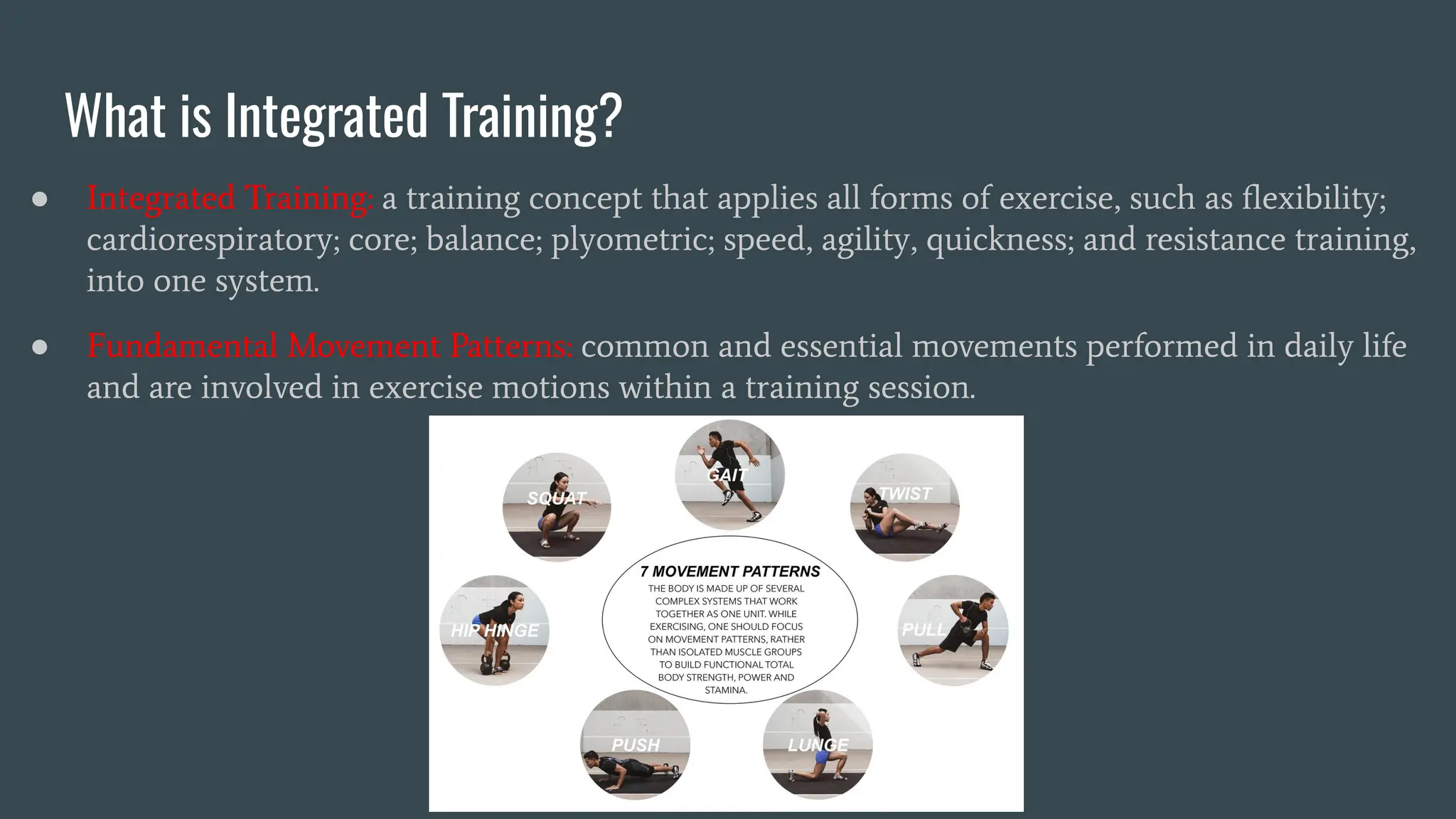Integrated training involves applying various forms of exercise like flexibility, cardio, strength, and plyometrics into a single training system. It follows the Optimum Performance Training (OPT) model, which progresses through five phases from stabilization to power. Each phase incorporates flexibility, cardio, core, balance, plyometrics, speed/agility, and resistance training. Cardiorespiratory training improves heart and lung health and aids weight loss. Target heart rates can be estimated using formulas like the Karvonen formula to assign appropriate exercise intensity levels.







































![Methods for Assigning Exercise Intensity
Heart Rate Reserve
● Karvonen Formula
[(HRmax – HRrest) × desired intensity] + HRrest Target heart rate
● This formula is likely more appropriate versus only calculating a percentage of HRmax
because it considers an individual’s resting heart rate, which tends to vary from person
to person.
[(HRmax – HRrest) × desired intensity] + HRrest =
Target heart rate
208 – (0.7 × 25) = 191 HRmax
191 (HRmax) – 50 (HRrest) = 141
141 × 85% (desired intensity) = 120
120 + 50 (HRrest) = 170 bpm
Thus, 170 beats per minute is the client’s target heart rate.](https://image.slidesharecdn.com/integratedtraining3-240402120415-02be3bc7/75/Integrated-Training-and-Exercise-Regimes-40-2048.jpg)




































